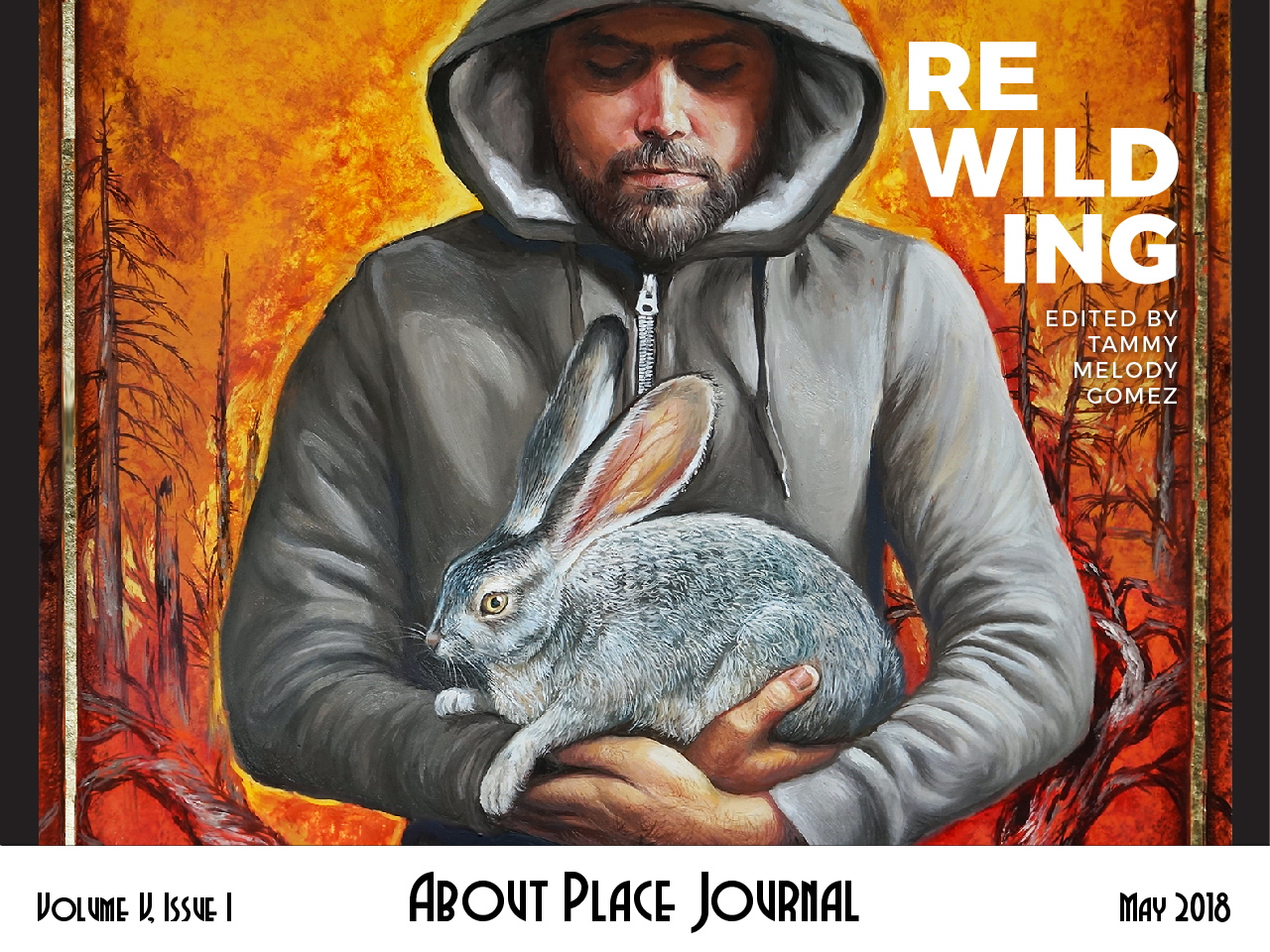the slick, heart-shaped leaves superimposed
over the prickly, drought-resistant ones—
so the silhouette is no longer its own,
subsumed within the larger circuitry.
The ivy presses prickers deep into the hide
so as better to launch up toward light.
I stand there arguing with them
About who is wrong and right.
For a moment I am that ivy, frenetically
careening across any surface
I encounter, tapping it with my long lines
to bid it speak with the one mind.
And now I am the one below,
the heart of the incandescent oak,
in the canyon of laurels and sword-
head ferns.
Over millennia how they attuned
to each other’s nitrogen and began
to talk among branches and roots.
In the canyon’s quiet, they extended company.
On the hillside where ferns’
heads are crowded over,
my hands find it easy
to begin to pull a strand of ivy,
though already it feels the work of many.
I hear and see the stream two hundred feet below,
where once ran rainbow trout.
On the stream-edge, three hundred bright flags
where volunteers’ hands planted the old,
the ancient plants of this canyon
small stay against the dogs who romp unheeded
into Sausal Creek bringing sediment which gluts the water
where any hope of trout laying eggs is choked.
These plants, neon-pink flags above seeds, call for the return
of those who for a decade haven’t been seen.
I, too, call to them.
And so up here with the unfinny oak, I realize we’re on our own.
It seems easy to rummage feet up the slope
to oak-base, begin to pull a strand, one, now two—
the whole long curtain—yanking—release into light—exposure
of long-covered grey skin—I pull what I can reach, the rest left to heights.
Before me, the uncovered bark, accustomed to the ivy-made shade,
a quarter-inch soil over it, in which are caught downed acorns.
I stare down at the little ecosystem.
A half-inch black beetle scurries out.
Its home I’ve removed.
I lose conviction, unsure of the path
of least harm. Halt my hands.
Resolve to ask those who know.
Refuge in the hope of the unfettered oak
companions in the canyon.


